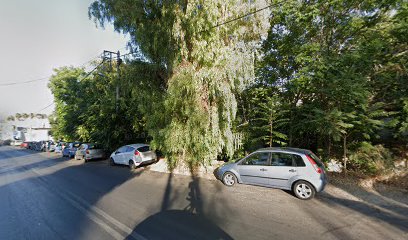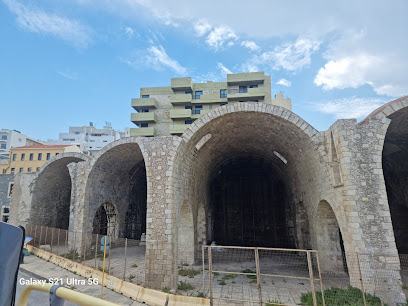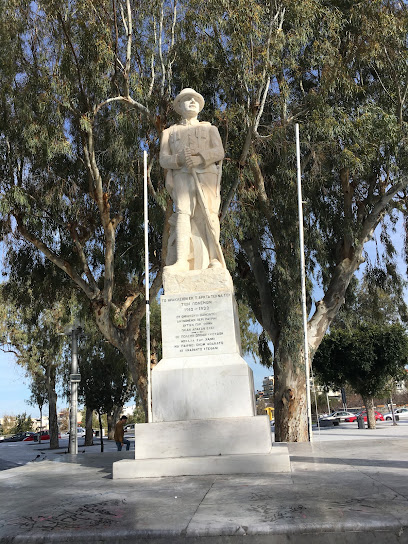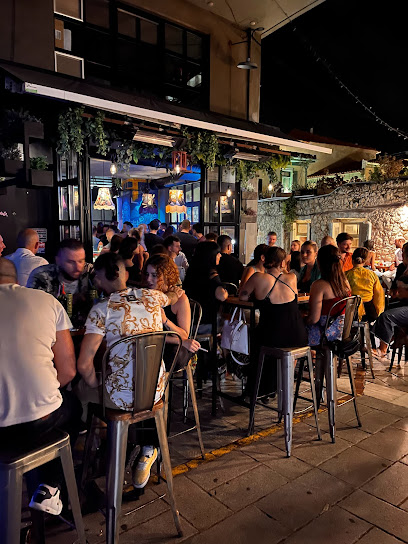
Journey Through Time: The Archaeological Museum of Heraklion
Discover the ancient wonders of Crete at the Archaeological Museum of Heraklion, a must-visit destination for history buffs and culture seekers alike.
The Archaeological Museum of Heraklion is a mesmerizing destination that offers a deep dive into the rich history and culture of Crete. As one of the most important museums in Greece, it houses an extensive collection of artifacts from the Minoan civilization, providing a unique glimpse into life over 4,000 years ago. Upon entering the museum, visitors are greeted by a multitude of exhibits that span from the Neolithic period to the Roman era. The museum's centerpiece is its unparalleled Minoan collection, which includes frescoes, pottery, jewelry, and the famous Phaistos Disc. Each artifact tells a story of a sophisticated and advanced society, making the museum a treasure trove for history enthusiasts and casual tourists alike. Beyond the exhibits, the museum's architecture itself is a marvel. The building has been thoughtfully designed to complement the grandeur of its contents, with spacious halls and natural lighting enhancing the viewing experience. The museum's location in the heart of Heraklion also makes it easily accessible, with plenty of nearby attractions, cafes, and shops to explore after your visit.
Local tips in Archaeological Museum of Heraklion
- Visit early in the morning to avoid the crowds and enjoy a more peaceful experience.
- Allocate at least two hours to fully appreciate the extensive exhibits.
- Check the museum's schedule for any special exhibitions or events during your visit.
- Wear comfortable shoes as you will be doing a lot of walking.
- Nearby cafes offer a great spot to relax and reflect on your visit.
Journey Through Time: The Archaeological Museum of Heraklion
The Archaeological Museum of Heraklion is a mesmerizing destination that offers a deep dive into the rich history and culture of Crete. As one of the most important museums in Greece, it houses an extensive collection of artifacts from the Minoan civilization, providing a unique glimpse into life over 4,000 years ago. Upon entering the museum, visitors are greeted by a multitude of exhibits that span from the Neolithic period to the Roman era. The museum's centerpiece is its unparalleled Minoan collection, which includes frescoes, pottery, jewelry, and the famous Phaistos Disc. Each artifact tells a story of a sophisticated and advanced society, making the museum a treasure trove for history enthusiasts and casual tourists alike. Beyond the exhibits, the museum's architecture itself is a marvel. The building has been thoughtfully designed to complement the grandeur of its contents, with spacious halls and natural lighting enhancing the viewing experience. The museum's location in the heart of Heraklion also makes it easily accessible, with plenty of nearby attractions, cafes, and shops to explore after your visit.
Iconic landmarks you can’t miss
Heraklion Archaeological Museum
Unveil the rich history of Minoan civilization at the Heraklion Archaeological Museum, a must-visit attraction for history lovers and tourists in Crete.

Historical Museum of Crete
Explore the fascinating history of Crete from ancient times to the modern era at the Historical Museum of Crete in Heraklion.

Venetian Gate St. George
Experience the rich history and stunning architecture of the Venetian Gate of St. George in Heraklion, a must-see landmark in Crete.

Herakleion Unknown Soldier Statue
Explore the poignant Unknown Soldier Statue in Heraklion, a tribute to bravery amidst the vibrant life of Crete's capital.

Ottoman Pumphouse
Immerse yourself in the rich history of Heraklion at the Ottoman Pumphouse, a stunning historical landmark showcasing architectural beauty.

Yenicar Aga Fountain
Discover the enchanting Yenicar Aga Fountain in Heraklion, a stunning historical landmark showcasing Venetian architectural beauty and rich cultural heritage.

Statue of El Greco
Discover the artistic legacy of El Greco at his stunning statue in Heraklion, a must-see monument celebrating the life of a true master.

Old Anchor
Explore Old Anchor in Heraklion, a historical tourist attraction that celebrates maritime heritage with stunning views and rich Cretan culture.

Monument of the Duke of Beaufort
Discover the Monument of the Duke of Beaufort in Heraklion, a historical landmark that showcases the richness of Venetian heritage and local culture.

Αλευρόμυλος Καστρινάκη
Discover the Alefárymblos Kastináki in Heraklion, a historical landmark that beautifully showcases the architectural heritage and cultural richness of Greece.

Unmissable attractions to see
Kenouryia Porta
Discover the historical significance of Kenouryia Porta, an iconic monument in Heraklion, Greece, where rich culture meets stunning architecture.

Venetian Shipyards / Vechi
Discover the historical Venetian Shipyards in Heraklion, a fascinating site reflecting Crete's rich maritime heritage and stunning waterfront views.

Herakleion Unknown Soldier Statue
Explore the Herakleion Unknown Soldier Statue, a symbol of courage in Greece, situated in the lively Plateia Eleftherias, a must-visit for history enthusiasts.

Old Anchor
Explore Old Anchor, a historical gem in Heraklion, Greece, where rich culture meets stunning coastal views, perfect for an unforgettable visit.

Essential places to dine
Peskesi
Discover the essence of Crete at Peskesi - where tradition meets modernity in every bite.

Antipodas
Experience authentic Greek cuisine at Antipodas in Heraklion - where tradition meets taste.

KOUZEINERI
Experience authentic Greek cuisine at Kouzeineri in Heraklion—where tradition meets modern culinary artistry.

Amalia's Kitchen
Experience authentic Greek cuisine at Amalia's Kitchen in Heraklion – where tradition meets taste in a warm and inviting atmosphere.

Ntoré Gastronomy
Experience the best of Greek cuisine at Ntoré Gastronomy in Heraklion - where tradition meets modern culinary artistry.

The chickpea
Experience authentic Mediterranean flavors at The Chickpea in Heraklion—where delicious meets affordable.

Minos Restaurant
Savor authentic Greek flavors at Minos Restaurant in Heraklion - a must-visit for culinary enthusiasts exploring Crete.

Anchorage Traditional Mezedopolion
Experience authentic Greek cuisine at Anchorage Traditional Mezedopolion in Heraklion – where traditional mezes meet warm hospitality.

Herbs' Garden
Experience authentic Cretan cuisine with breathtaking views at Herbs' Garden in Heraklion – a must-visit for every food lover.

Restaurant
Discover authentic Cretan cuisine at its finest in Heraklion's charming eatery featuring local flavors and warm hospitality.

Markets, malls and hidden boutiques
Irida Family Workshop
Explore Irida Family Workshop in Heraklion for unique, handmade souvenirs that capture the essence of Greek culture and craftsmanship.

Κουλουβάχατα Pottery Workshop
Explore the traditional craftsmanship at Κουλουβάχατα Pottery Workshop in Heraklion, where every piece tells a unique story of Cretan culture.

ZALO
Explore ZALO, the charming gift shop in Heraklion, offering unique souvenirs and boutique items that reflect the beauty of Crete.

AROMATTIKA The Store
Discover the heart of Greek craftsmanship at Aromattika, a unique embroidery shop in Heraklion offering exquisite handmade treasures.

Mayaba Store
Explore Mayaba Store in Heraklion for unique Greek gifts and antiques, showcasing the finest local craftsmanship and tradition.

Spirit of Greece
Discover unique Greek treasures at Spirit of Greece in Heraklion, a souvenir store offering handcrafted items and local delicacies.

Eleni Kastrinoyanni
Discover authentic Cretan souvenirs at Eleni Kastrinoyanni, a charming store in Heraklion offering unique crafts and local treasures.

Kilix Kratir
Explore Kilix Kratir in Heraklion for unique Cretan souvenirs, from handmade crafts to local treasures that embody the island's rich heritage.

GALANI BOTTEGA - exclusive department store
Experience luxury shopping at Galani Bottega, where fashion meets elegance in an exclusive department store setting.

Octapous
Discover Octapous in Heraklion for unique gifts and authentic Cretan souvenirs reflecting local craftsmanship and culture.

Essential bars & hidden hideouts
Xalavro Open Bar
Experience the vibrant atmosphere and exquisite cocktails at Xalavro Open Bar, a must-visit spot in Heraklion, Greece.

Swing Thing
Experience the vibrant nightlife at Swing Thing, Heraklion's premier cocktail bar, renowned for its creative drinks and lively atmosphere.

Polytechneio Cafe
Discover the vibrant atmosphere of Polytechneio Cafe, a top bar in Heraklion offering great drinks, live music, and a taste of local culture.

THINK TANK
Enjoy a unique blend of atmosphere, delicious drinks, and cozy ambiance at Think Tank in Heraklion, a perfect spot for relaxation and socialization.

La Brasserie
Experience the vibrant atmosphere of La Brasserie, a trendy bar and coffee shop in Heraklion, perfect for drinks, relaxation, and local nightlife.

Craft Beer - Kapheneion
Discover Kapheneion, the ultimate destination for craft beer enthusiasts in Heraklion, where local brews and friendly vibes await.

Stone Project
Experience the vibrant nightlife at Stone Project Cocktail Bar in Heraklion, where expertly crafted cocktails and unique flavors await you.

Take Five
Experience the vibrant atmosphere of Take Five, Heraklion's top bar and café, perfect for relaxation and socializing with locals.

Mikro Bar
Discover Mikro Bar in Heraklion, where vibrant nightlife meets a unique selection of drinks in a welcoming atmosphere.

Τhe Alley - Bar & Sounds
Experience the vibrant nightlife at Τhe Alley - Bar & Sounds in Heraklion, where eclectic vibes meet live music and delicious drinks.

Local Phrases
-
- HelloΓειά σας
[Yah sas] - GoodbyeΑντίο
[Adio] - YesΝαι
[Neh] - NoΌχι
[Ohi] - Please/You're welcomeΠαρακαλώ
[Parakalo] - Thank youΕυχαριστώ
[Efharisto] - Excuse me/SorryΣυγγνώμη
[Signomi] - How are you?Πώς είστε;
[Pos iste] - Fine. And you?Καλά. Εσείς;
[Kala. Esis] - Do you speak English?Μιλάτε Αγγλικά;
[Milate Anglika] - I don't understandΔεν καταλαβαίνω
[Den katalaveno]
- HelloΓειά σας
-
- I'd like to see the menu, pleaseΘα ήθελα να δω το μενού, παρακαλώ
[Tha ithela na do to menu, parakalo] - I don't eat meatΔεν τρώω κρέας
[Den troo kreas] - Cheers!Στην υγεία σας!
[Stin yia sas] - I would like to pay, pleaseΘα ήθελα να πληρώσω, παρακαλώ
[Tha ithela na plirosso, parakalo]
- I'd like to see the menu, pleaseΘα ήθελα να δω το μενού, παρακαλώ
-
- Help!Βοήθεια!
[Voithia] - Go away!Φύγε!
[Fiye] - Call the Police!Καλέστε την Αστυνομία!
[Kaleste tin Astinomia] - Call a doctor!Καλέστε ένα γιατρό!
[Kaleste ena yatro] - I'm lostΈχω χαθεί
[Eho hathi] - I'm illΕίμαι άρρωστος
[Ime arrostos]
- Help!Βοήθεια!
-
- I'd like to buy...Θα ήθελα να αγοράσω...
[Tha ithela na agoraso] - I'm just lookingΑπλά κοιτάω
[Apla kitao] - How much is it?Πόσο κοστίζει;
[Poso kostizi] - That's too expensiveΑυτό είναι πολύ ακριβό
[Afto ine poli akribo] - Can you lower the price?Μπορείτε να μειώσετε την τιμή;
[Borite na miosete tin timi]
- I'd like to buy...Θα ήθελα να αγοράσω...
-
- What time is it?Τι ώρα είναι;
[Ti ora ine] - It's one o'clockΕίναι μία ώρα
[Ine mia ora] - Half past (10)Μισή (10)
[Misi (dekka)] - MorningΠρωί
[Proi] - AfternoonΑπόγευμα
[Apoyevma] - EveningΒράδυ
[Vradi] - YesterdayΧθες
[Hthes] - TodayΣήμερα
[Simera] - TomorrowΑύριο
[Avrio] - 1Ένα
[Ena] - 2Δύο
[Dio] - 3Τρία
[Tria] - 4Τέσσερα
[Tessera] - 5Πέντε
[Pente] - 6Έξι
[Exi] - 7Επτά
[Epta] - 8Οκτώ
[Okto] - 9Εννιά
[Ennia] - 10Δέκα
[Deka]
- What time is it?Τι ώρα είναι;
-
- Where's a/the...?Πού είναι ένα/το...;
[Pu ine ena/to] - What's the address?Ποια είναι η διεύθυνση;
[Pia ine i diefthinsi] - Can you show me (on the map)?Μπορείτε να μου δείξετε (στο χάρτη);
[Borite na mou dixete (sto charti)] - When's the next (bus)?Πότε είναι το επόμενο (λεωφορείο);
[Pote ine to epomeno (leoforeio)] - A ticket (to ....)Ένα εισιτήριο (προς το ....)
[Ena isitirio (pros to)]
- Where's a/the...?Πού είναι ένα/το...;
History of Archaeological Museum of Heraklion
-
The history of the Archaeological Museum of Heraklion is deeply intertwined with the ancient Minoan civilization, which flourished on Crete from approximately 2700 to 1450 BC. The museum houses artifacts from the nearby Knossos Palace, the most significant Minoan site, showcasing advanced art and architecture that characterized this early civilization.
-
Following the decline of the Minoan civilization, Crete became part of the Roman Empire and later the Byzantine Empire. The museum contains numerous Roman-era artifacts, including pottery and coins, that reflect the island's continued importance as a trading hub in the Mediterranean.
-
During the Venetian occupation from the 13th to the 17th century, the city of Heraklion, known as Candia, became a strategic naval base. The Archaeological Museum of Heraklion was established in 1883, thanks to the efforts of archaeologists and local officials who recognized the need to preserve the island's rich heritage, showcasing artifacts from this period alongside ancient treasures.
-
The museum underwent significant renovations and expansions in the 20th century, particularly after World War II. Efforts were made to enhance the exhibition of Minoan artifacts, which ultimately positioned the museum as one of the top archaeological institutions in Greece, attracting scholars and visitors alike.
-
Today, the Archaeological Museum of Heraklion stands as a beacon of Cretan heritage, preserving thousands of artifacts that span over 5,000 years of history. The museum plays a vital role in educational and cultural activities, fostering a deeper understanding of the island's past among both locals and tourists.
Archaeological Museum of Heraklion Essentials
-
The Archaeological Museum of Heraklion is centrally located in Heraklion, making it accessible from various neighborhoods. If you're arriving from the airport, take Bus 1 or 2 from Heraklion Airport to the city center, which takes about 20 minutes. Alternatively, taxis are available and the ride will take approximately 10-15 minutes. If you are coming from the port, the museum is a 20-minute walk or a short taxi ride away.
-
Heraklion is a compact city, and the Archaeological Museum is within walking distance of many other attractions. Public transport options include local buses, which are affordable and connect various parts of the city. Bicycles can be rented from several shops in the area, promoting an eco-friendly way to explore. Taxis and rideshare services are also widely available for those who prefer not to walk.
-
Heraklion is generally safe for tourists, but as in any city, it's wise to remain vigilant. Areas around the city center are well-patrolled; however, avoid poorly lit streets at night and be cautious of your belongings in crowded areas. Petty crimes like pickpocketing can occur, especially in tourist hotspots. Always stay aware of your surroundings and keep your valuables secure.
-
In case of an emergency, dial 112 for police, fire, or medical assistance. The local hospital, Venizelio Hospital, is equipped to handle most emergencies. Make sure you have travel insurance that includes medical coverage. For minor health issues, pharmacies in Heraklion can provide over-the-counter medications.
-
Fashion: Do wear comfortable shoes for walking; avoid beachwear outside of the beach. Religion: Do visit churches and monasteries respectfully, covering shoulders and knees. Public Transport: Do offer your seat to the elderly or disabled; don't play loud music or disturb others. Greetings: Do greet with a friendly 'Kalimera' (Good morning); don't be overly formal, as locals appreciate a relaxed demeanor. Eating & Drinking: Do try local dishes like Moussaka and Cretan cheese; don't eat while walking, as it’s considered impolite.
-
To experience the Archaeological Museum of Heraklion like a local, consider visiting early in the morning to avoid crowds. Engage with museum staff who can offer insights into the exhibits. After your visit, explore nearby cafes to enjoy traditional Cretan coffee and pastries. Additionally, check the museum's schedule for temporary exhibitions or special events that might enhance your experience.
Nearby Cities to Archaeological Museum of Heraklion
-
Things To Do in Crete
-
Things To Do in Rethymno
-
Things To Do in Chania
-
Things To Do in Pyrgos
-
Things To Do in Santorini
-
Things To Do in Mykonos
-
Things To Do in Kos
-
Things To Do in Bodrum
-
Things To Do in Rhodes
-
Things To Do in Samos
-
Things To Do in Athens
-
Things To Do in Nafplio
-
Things To Do in Marmaris
-
Things To Do in Kalamata
-
Things To Do in Kusadasi










